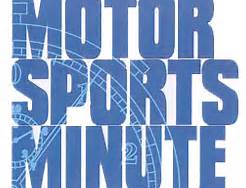Open Wheel Unification: Too Little…Too Late?
- Updated: February 22, 2008
HAMMOND, IN: With the demise of the Champ Car/CART
group, the 12 year war which tore American open-wheel
racing apart is finally over. But, the question
remains: who won?
I’m sorry, but it’s hard to be optimistic about the
post-“war” situation.
As we all know, an entire generation of potential
open-wheel fans and ticket buyers were lost during the
split. Our loss was obviously NASCAR’s gain.
In order for IndyCar to begin to regain the ground
that it lost during the “conflict”, it will be
necessary to offer the racing public something it
can’t get anywhere else. In other words: something
NASCAR can’t provide.
Mainly, I’m worried about the Indy 500. Like many of
you, I grew up secure in the knowledge that the
Memorial Day classic was, indeed, the “Greatest
Spectacle in Racing”. In the beginning, the magic 500
mile distance, coupled with the biggest purse in
motorsports, made the Indy 500 truly unique. Later,
after other 500 mile races appeared on the racing
calender, lap speeds and new track records became one
of the major draws for Indy Car fans and competitors
alike.
It’s hard to forget the excitement that was generated
at the Speedway each May at the prospect of broken
speed barriers and record laps. During the ’50’s and
’60’s, the big goal was the long-anticipated one
minute lap at Indy: 150 MPH. After years of
anticipation, the barrier was finally broken by
Parnelli Jones in 1963. But, happily, there were
always bigger speed numbers waiting to be challenged
on the horizon.
As the decades passed and technology moved forward,
175 MPH was achieved. Then, almost before anyone
realized it, the 200 MPH wall came tumbling down! The
Indianapolis 500, and Indy Car racing in general, was
on a roll. Interest in open wheel racing was at an all
time high, and it appeared that the end was nowhere in
sight.
The peak was reached in 1996 during the IRL’s first
season, when Arie Luyendyk pushed the unofficial track
record to over 239 MPH! It’s unlikely that we’ll see a
240 MPH lap at Indy during our lives and, in some
ways, that’s unfortunate. Due to safety concerns and
the resulting rules changes to slow the cars, the
magic and appeal of broken speed barriers at Indy is
probably over.
In the ’70’s, a group of rich car owners…refugees
from the defunct Can-Am sports car series, began to
invade Indy Car racing. Very few of these folks had
any real knowledge of, or interest in, traditional
American oval track racing, but they needed a new
playground, and the Indy 500 was still the “Greatest
Spectacle in Racing”.
Before long, the Can-Am boys banded together to form
CART and, in the early ’80’s, when unable to gain
control of Indy Car racing, they broke away and began
a rival series which placed more emphasis on road and
street racing. And, for the next decade, only the
Indianapolis 500 would bring the two groups together.
Finally, in 1996, Tony George attempted to rekindle
interest in open wheel oval track racing, and lower
the cost of competition at the same time, by forming
the Indy Racing League. Unfortunately, the wealthy
CART group decided to continue on their chosen
path…and the “war” was on. And, slowly but surely,
the very fabric on American open wheel racing began to
dissolve…
Now, 13 years later, the CART/Champ Car group has
finally awakened to the fact that the Indy 500
was…and still is…the cornerstone of open wheel
racing in this country. By ignoring this fact for
years, they have finally run out of money. Attempting
to control American open wheel racing with their
checkbooks rather than their hearts just didn’t work!
Is there a way to revive interest in Indy Car racing?
With the recent defection of Indy 500 winners Dario
Franchitti, Sam Hornish Jr., Juan Pablo Montoya and
Jacques Villeneuve, has NASCAR captured too much of
the market to be rivaled?
Like every other year since 1911, we’ll have to wait
until May for the answers. Cross your fingers…




![Porsche Fabcar crosses the finish line. [Robert Madara photo]](https://racingnation.com/wp-content/uploads/2023/11/FabcarFinish-108x70.jpeg)

![USF2000 Pro driver Lindsay Brewer. [Eddie LePine Photo]](https://racingnation.com/wp-content/uploads/2023/06/IMG_8825_2-108x70.jpg)